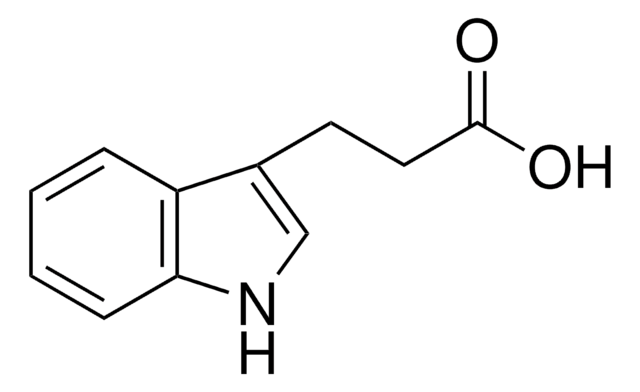추천 제품
애플리케이션
Lyticase from Arthrobacter luteus has been used to lyse the fungal cell wall for DNA isolation.
Lyticase from Arthrobacter luteus has been used:
- for spheroplasting the cells
- as a component of digestion solution to incubate yeast cells for digestion of the cell wall
- in the enzymatic hydrolysis of the mycelium precipitate to prepare protoplasts
생화학적/생리학적 작용
Lyticase enzyme is frequently used in fungal research, particularly for species identification using polymerase chain reaction (PCR)-based techniques. It can break down β (1→3) and β (1→4) bonds between glucose units. Lysozyme serves as an indicator of macrophage-mediated host response, correlates with white cell death, and exhibits a high turnover rate. Elevated levels of serum lysozyme have been observed in various chronic inflammatory conditions, inflammatory bowel diseases, hematological disorders, and renal disorders. The c-type lysozyme from hen egg white is commonly used as a model for studying protein structure and function. Muramidase primarily exhibits bactericidal activity against Gram-positive bacteria. The method described in the bulletin for determining molecular masses using gel filtration chromatography is a modified version of existing published techniques. The protein standards included in this kit may be compatible with other chromatographic systems like high-performance liquid chromatography (HPLC). However, certain buffer systems may affect the elution volumes of albumin and carbonic anhydrase. The proteins in this kit have a molecular mass range spanning from 29 kDa to 699 kDa.
Yeast cells are difficult to disrupt because the cell walls may form capsules or resistant spores. DNA can be extracted from yeast by using lysing enzymes such as lyticase to induce partial spheroplast formation. Spheroplasts are subsequently lysed to release DNA. Lyticase is preferred to digest the cell walls of yeast and generate spheroplasts from fungi for transformation. It contains β-(1→3)-glucan laminaripentaohydrolase along with β-(1→3)-glucanase, protease, and mannanase activities. Lyticase is used for yeast cells like Candida, Debaryomyces, Saccharomyces, Saccharomycopsis, Saccharomycodes, Eremothecium, and Schwanniomyces species.
Lyticase hydrolyzes poly-β(1→3)-glucose such as yeast cell wall glucan.
단위 정의
One unit will produce a ΔA800 of 0.001 per min at pH 7.5 at 25 °C, using a suspension of yeast as substrate in a 3 mL reaction mixture.
물리적 형태
Partially purified, lyophilized powder containing potassium phosphate buffer salts and stabilizers
기타 정보
View more information on enzymes for complex carbohydrate analysis at www.sigma-aldrich.com/enzymeexplorer
For R&D use only. Not for drug, household, or other uses. Please consult the Safety Data Sheet for information regarding hazards and safe handling practices.
신호어
Danger
유해 및 위험 성명서
예방조치 성명서
Hazard Classifications
Resp. Sens. 1
Storage Class Code
11 - Combustible Solids
WGK
WGK 3
Flash Point (°F)
Not applicable
Flash Point (°C)
Not applicable
개인 보호 장비
Eyeshields, Gloves, type N95 (US)
시험 성적서(COA)
제품의 로트/배치 번호를 입력하여 시험 성적서(COA)을 검색하십시오. 로트 및 배치 번호는 제품 라벨에 있는 ‘로트’ 또는 ‘배치’라는 용어 뒤에서 찾을 수 있습니다.
A protein transformation protocol for introducing yeast prion particles into yeast
Tanaka M, et al.
Methods in Enzymology, 470, 681-693 (2010)
Hagen Frickmann et al.
BMC microbiology, 19(1), 75-75 (2019-04-10)
The potential of next-generation sequencing (NGS) for hypothesis-free pathogen diagnosis from (poly-)microbially contaminated, formalin-fixed, paraffin embedded tissue samples from patients with invasive fungal infections and amebiasis was investigated. Samples from patients with chromoblastomycosis (n = 3), coccidioidomycosis (n = 2), histoplasmosis (n = 4), histoplasmosis or
Daniel Zenklusen et al.
Nature structural & molecular biology, 15(12), 1263-1271 (2008-11-18)
Proper execution of transcriptional programs is a key requirement of gene expression regulation, demanding accurate control of timing and amplitude. How precisely the transcription machinery fulfills this task is not known. Using an in situ hybridization approach that detects single
Anne Schwabe et al.
Nature communications, 5, 4798-4798 (2014-09-03)
Individual cells respond very differently to changes in environmental conditions. Stochasticity causes cells to respond at different times, magnitudes or both. Here we disentangle and quantify these two sources of heterogeneity. We track the adaptation dynamics of single Saccharomyces cerevisiae
Joana Segura et al.
Nature communications, 9(1), 3989-3989 (2018-09-30)
The interplay between chromatin structure and DNA topology is a fundamental, yet elusive, regulator of genome activities. A paradigmatic case is the "linking number paradox" of nucleosomal DNA, which refers to the incongruence between the near two left-handed superhelical turns
프로토콜
This procedure may be used for the determination of Lyticase activity using Baker’s yeast as the substrate.
자사의 과학자팀은 생명 과학, 재료 과학, 화학 합성, 크로마토그래피, 분석 및 기타 많은 영역을 포함한 모든 과학 분야에 경험이 있습니다..
고객지원팀으로 연락바랍니다.







